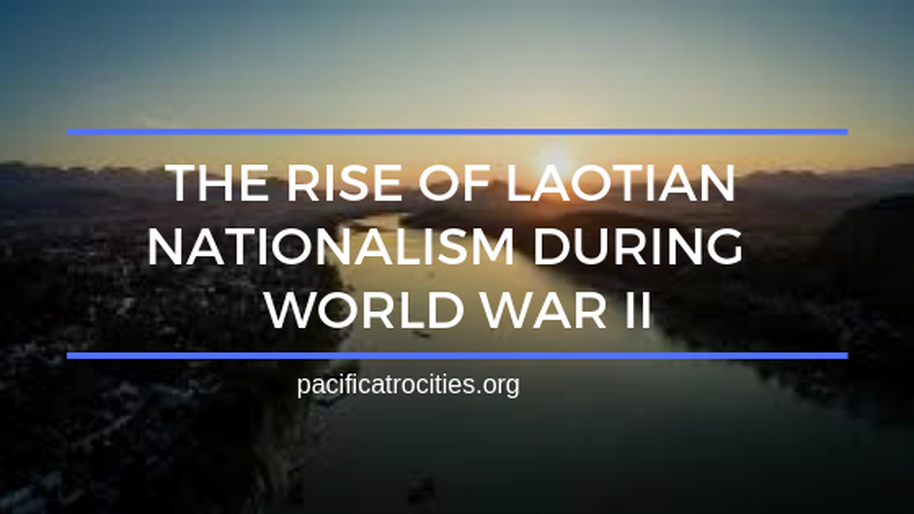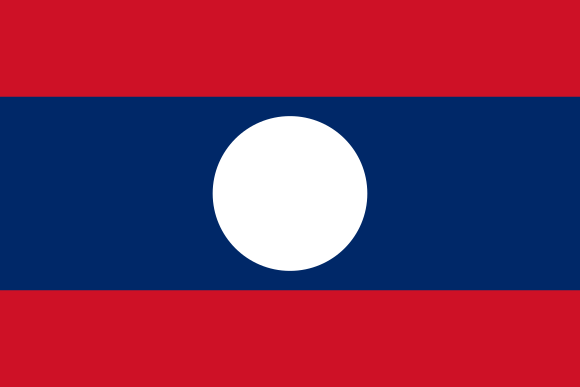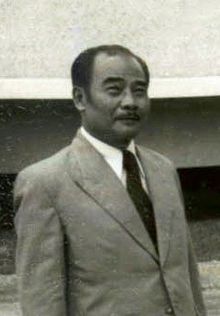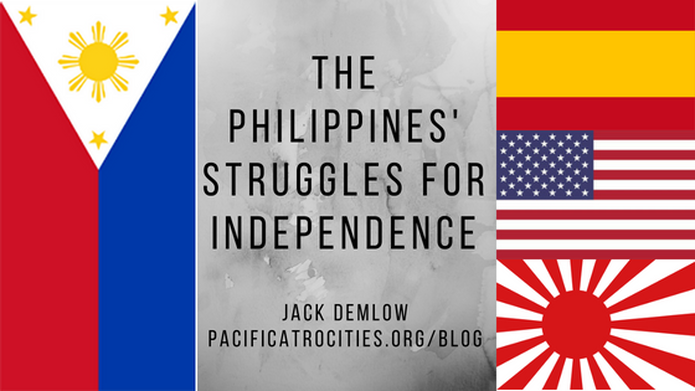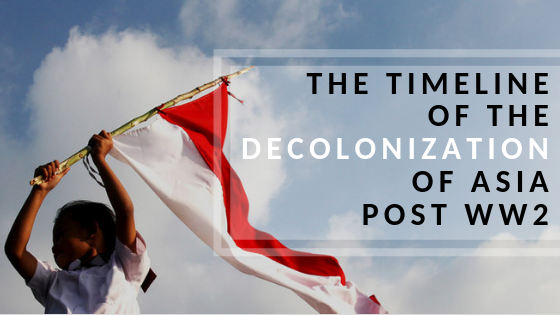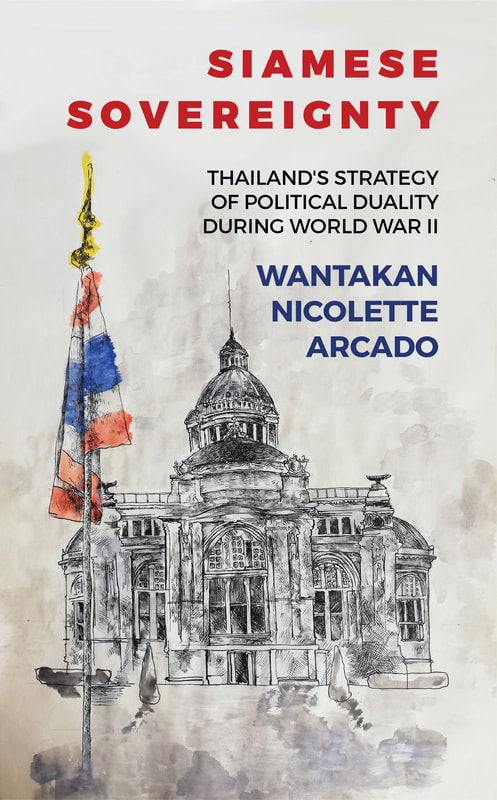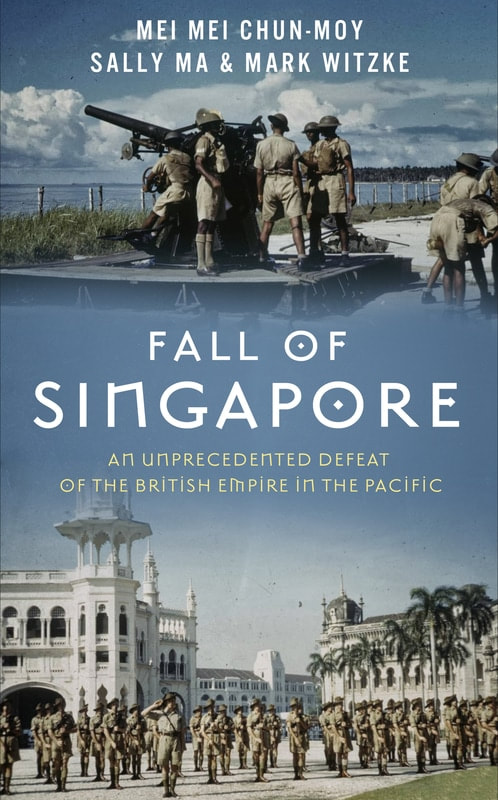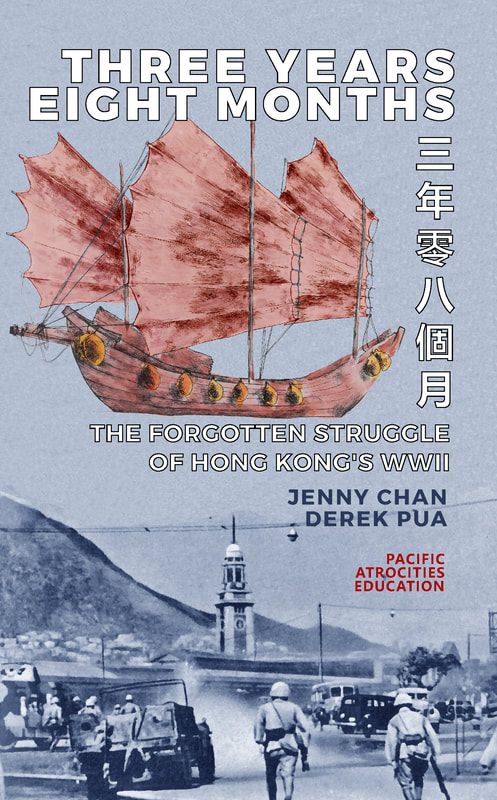|
by Nickii Wantakan Arcado
Looking back, one could say that Laos was in an interesting place during World War II. The country was occupied by two forces, both allied and axis powers while simultaneously fighting off Thai forces near the border, underwent internal struggles due to the conflicting ideals of members of the royal family, and the country was involved in one of the most disastrous bombing tactics in the History of the World. Yet, despite these incident, the country still managed to fight their way towards eventual independence in the late 1970s.
Beginning in 1940, an agreement called the Matsuoka-Henry Pact was enacted by the French government under the Vichy regime and Imperial Japan. Wanting to retain their colony in Southeast Asia but also recognizing their growing weakness in the region, the French government came up with a proposition to present to the Japanese: France would retain their sovereignty over Indochina and in exchange, Japanese forces were allowed to station troops within Indochina, including Laos. Such agreement, however, did not hold up as intended due to two fronts; the growing threat from Thailand’s authoritarian regime under Prime Minister Phibun and Japan’s abolishment of the treaty itself in 1945. Beginning with the former, Thailand was launching both a political and social campaign against Laos, broadcasting nationalistic messages calling for the reunification of lost lands along the Mekong river. On August 1940, the Royal Thai Army attacked the Laotian provinces of Vientiane and Champassak along the eastern bank of the river. Eventually, a ceasefire—mediated by Japan—between French and Thai forces was eventually reached, granting Thailand territories near the southern border that was previously lost to the French colonization in 1904. (Details on these concessions can be seen in our last article here). In order to counter future Thai threats, French Governor-General of Indochina Jean Decoux supported Laotian nationalism, giving his support to the Movement for National Renovation which, although defended Lao territory, continued to acknowledge French rule over the nation. Running polar opposite to the Movement for National Renovation, on the other hand, was the Lao Isarra (Free Lao) nationalist movement. Unlike its counterpart, the Lao Isarra movement did not support French control and called for “Laos for Laotian” policies that would grant the country full independence. This precedent would later set the foundation for the rise of Lao nationalism and the fight for complete independence several years later. On the second front, on March 9, 1945, the Japanese empire overturned the Matsuoka-Henry Pact via a coup de force, detaining all French forces in Indochina, with a majority being detained in Laos. While Laos for Japan didn’t hold any significant strategic importance and mainly served as a buffer zone, as Japan began losing forces in the Pacific Front, the country decided that the best way to solidify their stronghold in Southeast Asia was to dissolve all French control in Laos. Arresting several French forces as well as Laotian allies, the Japanese also detained Lao’s ruling monarchy, King Sisavang Vong. In an interesting turn of events, Imperial Japan forcibly called for Laotian independence, but one that was much different from the French. For Japan, Laotian independence would allow the nation to be properly merged into the Greater East Asia Co-Prosperity Sphere. 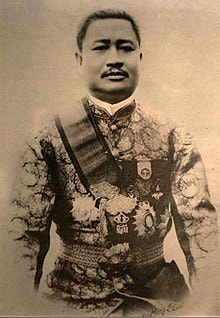 King Sisavang Vong King Sisavang Vong
While French forces supported the current king, Japan had an equally powerful and special allyship with his cousin, Prince Phetsarath Rattanavongsa. At complete odds with the King, the Prince was opposed to French colonial rule, arguing that France’s surrender of Laotian territories to Thailand shows France’s failure to protect the country. After the end of World War II, a power vacuum arose, providing an amply opportunity for the Lao Issara movement (under the direction of Prince Phetsarat Rattanavongsa) movement to take control and form an interim government in Vientiane. The movement was sadly short lived.
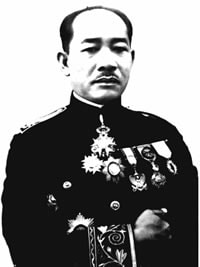 Prince Phetsarat Rattanavongsa Prince Phetsarat Rattanavongsa
Seeing the movement as an impasse to their colonial restoration, French forces under Colonel Hans Imfeld along with the support of freed French prisoners moved against Lao Issara forces. King Sisavang Vong also denounced the takeover of Vientiane, repudiated the declaration for independence by the movement, and argued that Laos still required French protection. Instantly, tensions between Vientiane under Prince Phetsarat Rattanavongsa and Luang Prabang under King Sisavang Vong erupted. The King moved to dismiss the Prince as prime minister, and in response, the provisional National Assembly (established in Vientiane) passed a motion to depose the king. These series of events paved way for the French to regain control of Laos in 1946.
Soon French forces veered north to seize control of the rest of the country and the Lao Issara government was forced to flee in exile to Bangkok, Thailand. Many incidents paved the way for the fall of the Lao Issara movement. First was the modus vivendi agreement between Ho Chi Minh in Vietnam and the French government on March 1946, which dissolved Chinese forces within the country. This severely weakened the Lao Issara government’s military power. Second was the appeal of the movement to the greater population as a whole. The Lao Issara movement was an academic, urban-based movement and leaders soon found it difficult to appeal to masses as a majority of the population was more tribal-oriented whose needs were more orientated on access to resources (water, food, job security) than it was for a free and independent country. Other factors, such as their inability to receive foreign aid and internal conflict within the Lao Issara movement itself also contributed to the downfall.
After the exile of the movement, the French then signed a modus vivendi with King Sisavang Vong, reinstalling his power and reaffirming the unity of Laos under French control. Previous lands taken by Thailand in the 1940s were also restored. For the next 3 years, the French integrated Laos into their Indochinese Federation, granting the country its own government and National Assembly. They also built the country’s first high school and improved public services. However, in 1949, a stalemate had arose between the French and Viet Minh forces. Still holding on to the prospects of independence, Prince Souphanouvong—a half brother to Prince Phetsarath Ratanavongsa— used this stalemate and French distraction to round up the remaining supporters of Lao Issara and renamed the movement to Pathet Lao in 1950. Although the organization was still anti-French, it adopted a more militant stance than its former counterpart. The movement then joined forces with the Viet Minh, an armed, communist-oriented nationalist organization that opposed French rule in Indochina. Fearing the communist takeover of Laos and a potential civil war, France conceded and granted Laos its independence under the 1954 Geneva Conference. However, conflict between the loyalist and Pathet Lao was inevitable, and by 1962, the country underwent a civil war.
During the Laos civil war in the 1960s to the early 1970s, the movement clashed with the U.S.-backed Vientiane regime and effectively won areas in the north and east part of Laos. The war essentially boiled down to a proxy war, with each side receiving external support from the Cold War superpowers as well as either North or South Vietnamese forces. During the civil war, the U.S. dropped than 2 million tons of ordinances, specifically cluster bombs, over the country, totaling to about 580,000 bombing mission. Not only was this deemed the heaviest aerial bombardments in history and marked Laos as the most bombed country in the world, a number which is higher than the U.S. bombs that were dropped in Japan and Germany combined. To the country continues to be plagued with over 80 million unexploded bombs.
Click here to see a gif of the increase of bombings from 1964-1973
By the end of the civil war in 1975, the Vientiane government fell to Pathet Lao and Northern Vietnamese forces and the leaders behind the movement consolidated their power and formed a new government in power today. Though the nation did undergo the violence of several wars and internal conflict prior to their independence by 1954 and 1975, these opportunities gave way for the country to evolve their own series of policies. By 1997, the country joined ASEAN (the Association of Southeast Asian Nations) using such platform to voice their prospects for the future as a developing state that has fought through some of the hardest conflict the world has ever seen.
References:
Related ArticlesRelated Books
0 Comments
Leave a Reply. |
- Home
- Stories
-
Internship
- Summer 2024 Internship
- Summer 2023 Internship
- Fall 2022 Internship
- Summer 2022 Internship
- Summer 2021 Internship
- Fall 2020- Spring 2021 Internship
- Summer 2020 Internship
- Fall 2019 Internship
- Summer 2019 Internship >
- School Year 2018-2019 Internship
- Summer 2018 Internship >
- Fall 2017 Internship
- Summer 2017 Internship >
- Books
- Archives
-
Resource Page
-
Supplementary Research Guides
>
- Unit 731 - Guide >
-
Philippines' Resistance - Guide
>
- Philippines World War II Timeline
- The Japanese Invasion & Conquest of the Philippines
- Bataan Death March
- Formation of Underground Philippines Resistance
- Supplies of the Guerrilla Fighters
- The Hukbalahap
- Hunter's ROTC
- Marking's Guerrillas
- United States Army Forces in the Philippines of Northern Luzon (USAFIP-NL)
- The Aetas
- Chinese and Filipino-Chinese Nationalist Guerrilla Units
- The Female Faces of the Philippine Guerrillas
- Rising Sun Flag - Guide >
- Pinay Guerrilleras - Guide >
- Fall of Singapore - Guide >
- Three Years and Eight Months - Guide >
- Siamese Sovereignty - Guide >
- The Khabarovsk War Crimes Trial - Guide >
- Unit 731 Cover-up : The Operation Paperclip of the East - Guide >
- Marutas of Unit 731 - Guide >
- Prince Konoe Memoir - Guide >
- Competing Empires in Burma - Guide >
- Battle of Shanghai - Guide >
- Ishi Shiro - Guide >
- Taiwan The Israel of the East - Guide >
- Seeking Justice for Biological Warfare Victims of Unit 731 - Guide >
- Rice and Revolution - Guide >
- Clash of Empires - Guide >
-
Hunger for Power and Self-SufficiencyI - Guide
>
- The Influence of War Rations on Post-War Culinary Transformations
- How World War II Complicated Food Scarcity and Invention
- American Military Innovations
- Government-Sponsored Food Inventions in Europe during World War II
- Feeding the Army: The Adaptation of Japanese Military Cuisine and Its Impact on the Philippines
- Mixed Dishes: Culinary Innovations Driven by Necessity and Food Scarcity
-
Denial A Quick Look of History of Comfort Women and Present Days’ Complication - Guide
>
- The Comfort Women System and the Fight for Recognition
- The Role of Activism and International Pressure
- The Controversy over Japanese History Textbooks
- The Sonyŏsang Statue and the Symbolism of Public Memorials
- Activism and Support from Japanese Citizens
- The Future of Comfort Women Memorials and Education
- Echoes of Empire: The Power of Japanese Propaganda - Guide >
- Lesson Plans >
-
Supplementary Research Guides
>
|
Pacific Atrocities Education
730 Commercial Street San Francisco, CA 94108 415-988-9889 |
Copyright © 2021 Pacific Atrocities Education.
We are a registered 501 (c)(3) charity. |
- Home
- Stories
-
Internship
- Summer 2024 Internship
- Summer 2023 Internship
- Fall 2022 Internship
- Summer 2022 Internship
- Summer 2021 Internship
- Fall 2020- Spring 2021 Internship
- Summer 2020 Internship
- Fall 2019 Internship
- Summer 2019 Internship >
- School Year 2018-2019 Internship
- Summer 2018 Internship >
- Fall 2017 Internship
- Summer 2017 Internship >
- Books
- Archives
-
Resource Page
-
Supplementary Research Guides
>
- Unit 731 - Guide >
-
Philippines' Resistance - Guide
>
- Philippines World War II Timeline
- The Japanese Invasion & Conquest of the Philippines
- Bataan Death March
- Formation of Underground Philippines Resistance
- Supplies of the Guerrilla Fighters
- The Hukbalahap
- Hunter's ROTC
- Marking's Guerrillas
- United States Army Forces in the Philippines of Northern Luzon (USAFIP-NL)
- The Aetas
- Chinese and Filipino-Chinese Nationalist Guerrilla Units
- The Female Faces of the Philippine Guerrillas
- Rising Sun Flag - Guide >
- Pinay Guerrilleras - Guide >
- Fall of Singapore - Guide >
- Three Years and Eight Months - Guide >
- Siamese Sovereignty - Guide >
- The Khabarovsk War Crimes Trial - Guide >
- Unit 731 Cover-up : The Operation Paperclip of the East - Guide >
- Marutas of Unit 731 - Guide >
- Prince Konoe Memoir - Guide >
- Competing Empires in Burma - Guide >
- Battle of Shanghai - Guide >
- Ishi Shiro - Guide >
- Taiwan The Israel of the East - Guide >
- Seeking Justice for Biological Warfare Victims of Unit 731 - Guide >
- Rice and Revolution - Guide >
- Clash of Empires - Guide >
-
Hunger for Power and Self-SufficiencyI - Guide
>
- The Influence of War Rations on Post-War Culinary Transformations
- How World War II Complicated Food Scarcity and Invention
- American Military Innovations
- Government-Sponsored Food Inventions in Europe during World War II
- Feeding the Army: The Adaptation of Japanese Military Cuisine and Its Impact on the Philippines
- Mixed Dishes: Culinary Innovations Driven by Necessity and Food Scarcity
-
Denial A Quick Look of History of Comfort Women and Present Days’ Complication - Guide
>
- The Comfort Women System and the Fight for Recognition
- The Role of Activism and International Pressure
- The Controversy over Japanese History Textbooks
- The Sonyŏsang Statue and the Symbolism of Public Memorials
- Activism and Support from Japanese Citizens
- The Future of Comfort Women Memorials and Education
- Echoes of Empire: The Power of Japanese Propaganda - Guide >
- Lesson Plans >
-
Supplementary Research Guides
>
